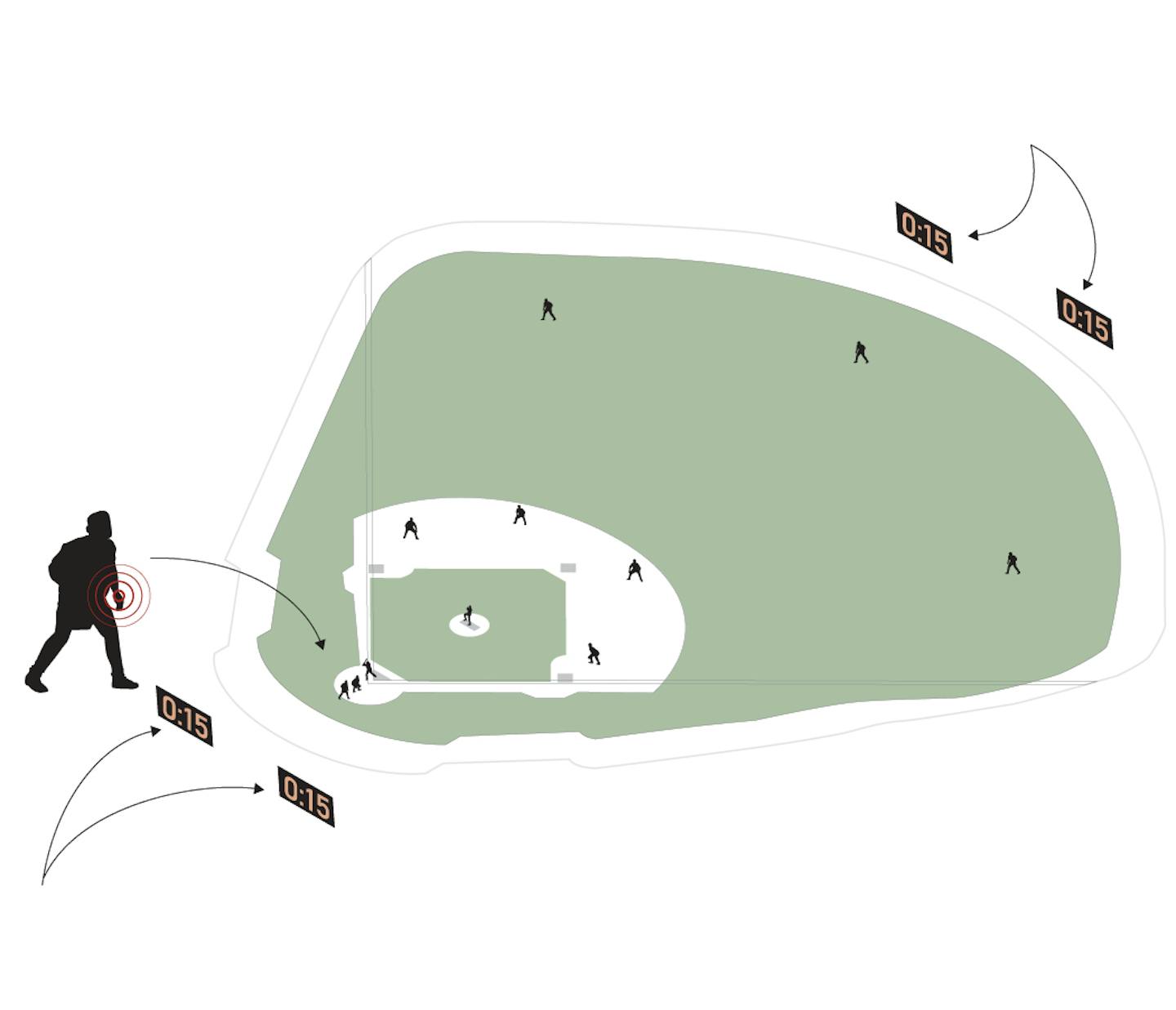If you go to a Twins game this season, it might look a little different from years past and likely will end a lot earlier.
New rules instituted this season by Major League Baseball are intended to make the game go faster and return some excitement to baseball — changes possibly resulting in more hits, more stolen bases and less dead time between pitches.
Here's a look:
PITCH CLOCK
In 2021, MLB set a record when the average length of a nine-inning game eclipsed 3 hours and 10 minutes — about 40 minutes longer than the average game in 1980.
Much of that time increase stemmed from changes to how the game has been played. Pitchers throw harder than ever, leading to fewer hits and more strikeouts. Batters responded by simply trying to hit home runs, adding more strikeouts.
Worst of all, the amount of time between pitches, as high-effort pitchers rested and hitters adjusted their batting gloves, turned most games into action-deficient slogs, particularly for TV viewers.
Under the new rules, a pitcher must be winding up to deliver a pitch within 15 seconds of receiving the ball, or 20 seconds if a runner is on base; an automatic ball is called if he is not.
A batter must be in the box and looking at the pitcher when the clock reaches eight, or an automatic strike is assessed.
Pitchers can step off the rubber, whether to attempt a pickoff or simply reset the clock, only twice per at-bat; a third time is a balk, unless the pickoff throw is successful.
Hitters can call timeout only once.
The changes are expected to knock an average of about 25 minutes off games. When the Twins lost in Miami on Tuesday, the game was played in 1 hour, 57 minutes — the team's fastest nine-inning game since 2010.
Here's where you'll be able to see the pitch timers in the stadium:

The timers are positioned so that right- and lefthanded hitters can easily see the running of the clocks.
So the home plate umpire can keep his attention on the incoming pitch, the umpire will have a buzzer device which will tell him if the pitcher has gone over the time limit. If the pitcher hasn't started his motion in time, the umpire will assess a violation.
DEFENSE
In recent years, it has become more common for teams to position their defenders according to each batter's tendencies, squeezing still more offense out of the game.
Last season the Twins used an infield shift 44% of the time — sixth-most in the majors — and relied on it extensively against lefthanded batters.
Teams brought someone from the left side — usually the third baseman — to play short right field. That, combined with the second baseman and first baseman, created a triangle of terror for lefthanded pull hitters.
Hitters also were foiled on hard-hit balls up the middle that the shortstop, starting on the outfield grass, could gobble up.
The new rules prevent that kind of shifting and set requirements on where infielders need to be positioned.

BASES
Controlling the running game becomes more important in this new era, as well.
Starting this season bases will be larger, shortening the distance between first and second by 4½ inches. With so many stolen bases coming down to a fingernail, will that encourage more base stealing?
Stolen bases — or even attempts — have become less common over the past decade, yet represent another way that baseball has lost some of its excitement.
Pitchers will have 20 seconds to deliver a pitch with a runner on base. They will have three opportunities to throw over to first. If the third try is unsuccessful, the baserunner is awarded a base. All that seems to give baserunners a big advantage.
Through the first weekend of play, stolen base attempts have doubled and the success rate has gone from 67% to 83%.
Staff reporters Phil Miller and La Velle E. Neal III contributed to this report.